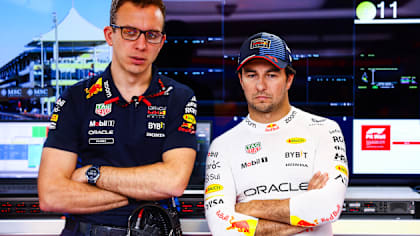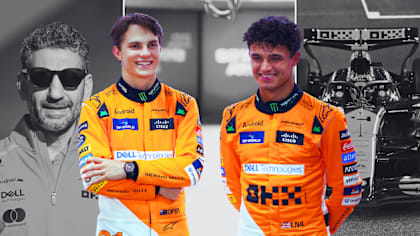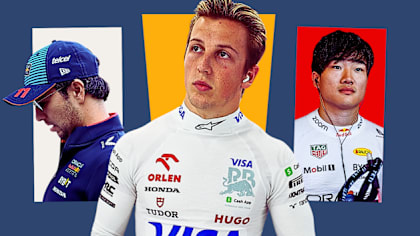
Feature
TREMAYNE: Remembering the first Chinese Grand Prix, 20 years on from F1's first visit to Shanghai
Share

It’s hard to believe Formula 1 first went to China as long ago as 2004 – with this weekend’s return to the Shanghai International Circuit after four years off the calendar marking 20 years since the first ever Chinese Grand Prix.
Back then it was, as then BAR-Honda chief David Richards accurately summarised, “like the Klondike, the new frontier.”
READ MORE > IT'S RACE WEEK: 5 storylines we're excited about ahead of the 2024 Chinese Grand Prix
Everyone was greatly enthused about another big adventure to a country with little background in motorsport, especially the team bosses. Norbert Haug, the motorsport director of Mercedes-Benz, demonstrated that hyperbole was alive and well when he said: “In my view this is a very important race, probably the most important race in the history of motorsport.”
Cynical hacks that we are (were), we could not help but consider that a not inconsiderable exaggeration, given that F1’s glittering history had embraced a world championship for 54 years and seen some pretty spectacular events – and that other formulae could claim likewise.
But the inaugural Chinese Grand Prix stirred the juices and it was a telling indication of how the world’s major car makers saw China as a new Eldorado. All of them were salivating at the prospect of a major new market opening up in the years ahead, and the Grand Prix was exactly what they wanted to get it all revved up.
“It’s a new era and I think we will have more spectators worldwide for television than for any race before,” Norbert continued. “Especially in America I think there will be a lot mentioned about the race.”
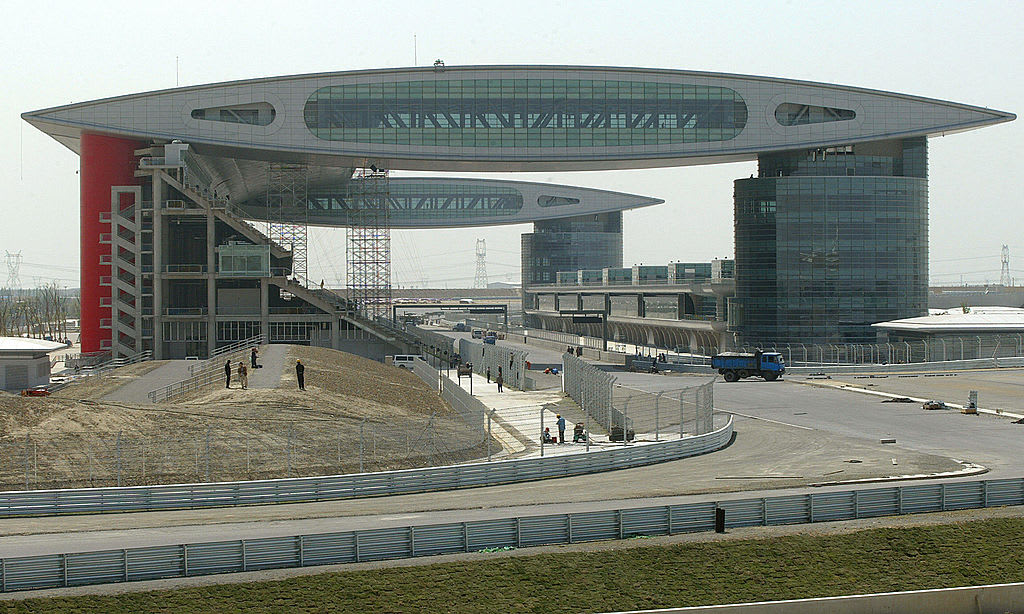
The new track was built in just 18 months
His fellow countryman Mario Theissen, the boss of BMW Motorsport for whom China was the already fastest growing market, concurred. “In terms of market power, nothing so far compares with this race,” he averred.
And, to be fair, it was crystal clear that the Chinese had embraced the project with huge enthusiasm. The purpose-built 3.387 mile (5.451 km) Shanghai International Circuit felt more like walking around Disneyland as buildings towered over you everywhere you went.
And on the other side of the vast paddock a series of winding pathways across ornate ponds led to the individual team hospitality areas. That was a very neat touch.
Perhaps the most breath-taking aspect was the press room, which was suspended 40 metres across the track just behind the start/finish line. The glass was covered with some special protective stuff which seemed opaque if you looked directly at it, but through which one could view the start if you adjusted your range of vision. Weird!
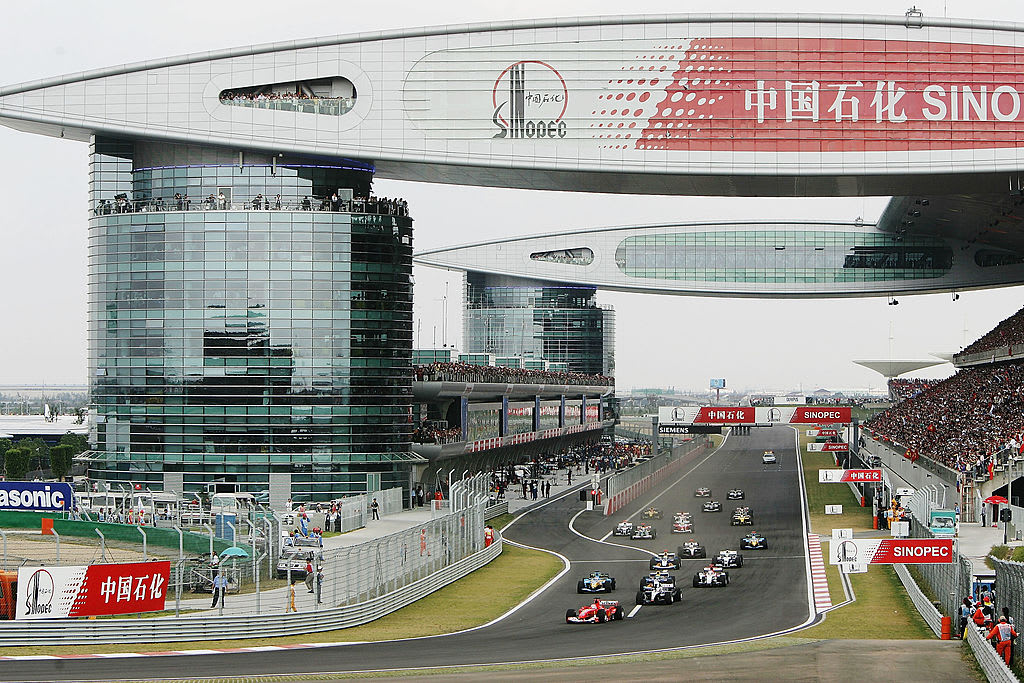
Rubens Barrichello leads at the start of the race, with the press room over the top of the track
Opulence oozed from every pore. Construction of the state-of-the art track, which was built on marshland just outside Shanghai itself, began less than 18 months earlier, and was completed in a quite remarkable 530 days.
It entailed two million cubic metres of earth; 40,000 batches of foundation material; 320,000 cubic metres of foam materials; 12,000 metric tonnes of steel structure straddling the track; 80,000 grandstand seats; and six-lane entry highways. To those of us used to the piecemeal ways in which things had to be done in many other venues, it was a real eye-opener as to what you could achieve with an unlimited budget.
READ MORE: Fashion, tigers and Alonso’s words of wisdom – Getting to know the real Zhou Guanyu
I remember we joked that you would only invite members of the British Racing Drivers’ Club, the at-that-time beleaguered owner of our beloved Silverstone, to come and see for themselves the face of F1’s future if you wanted to be unkind. The new reality was simply too harsh. SIC was a $240m undertaking, a reminder that the past was nowhere near as important to the sport’s administrators and competitors as the future.
And that led to a bit of tetchiness and acrimony in the Thursday press conference, courtesy of the always amiable and outgoing Renault boss, Flavio Briatore.
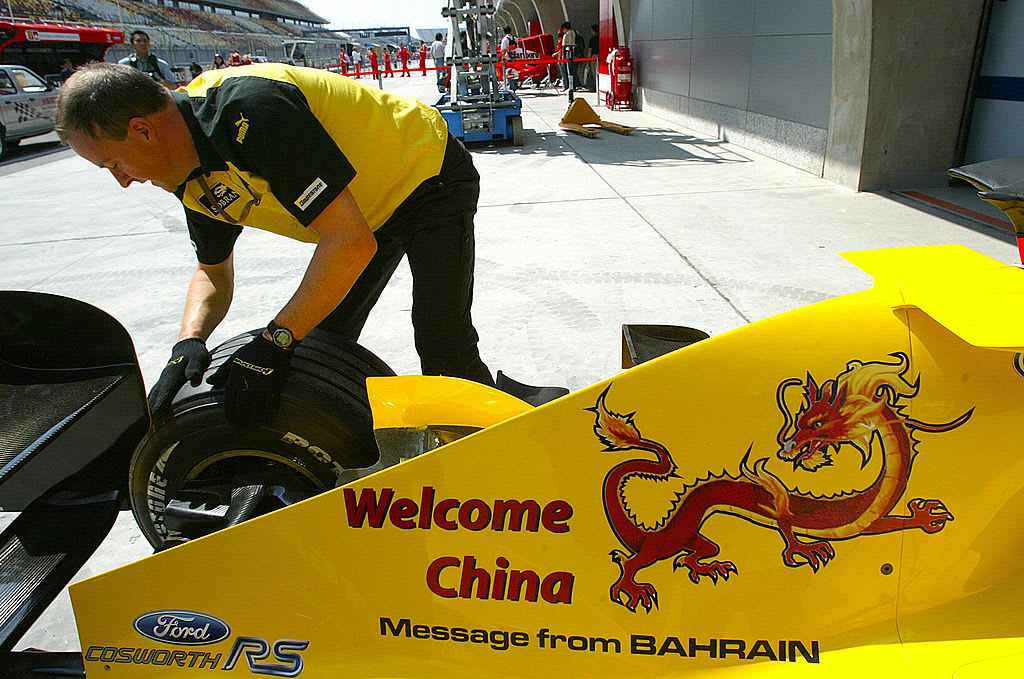
A welcome message for China on the Jordan cars, from the other new race in 2004, the Bahrain Grand Prix
At that time the smaller teams were often in degrees of financial or managerial trouble. By its very nature, F1 is never a trip to Paris for everyone at the same time. At this particular point in its history, both Jaguar and Jordan had their woes, and unsurprisingly the media wanted some answers from Tony Purnell, boss of the Jaguar team (which Ford would axe at the end of the season), and the voluble Eddie Jordan.
To our schoolboy amusement this appeared to irk Flav, who must have seen it as a negative that might upset the publicity conscious hosts.
READ MORE: FIA and Formula 1 announce calendar for 2025
“I think this press conference makes no sense,” he growled. “Here we are in China for the first race and you start talking about the problem for Jordan. If Jordan has a problem and if Tony has a problem, I’m sure this is not the place to resolve the problem. Instead of being enthusiastic to come to this place, where the people have made a lot of effort to prepare for an incredible race, you guys try to turn things round as usual for no reason.
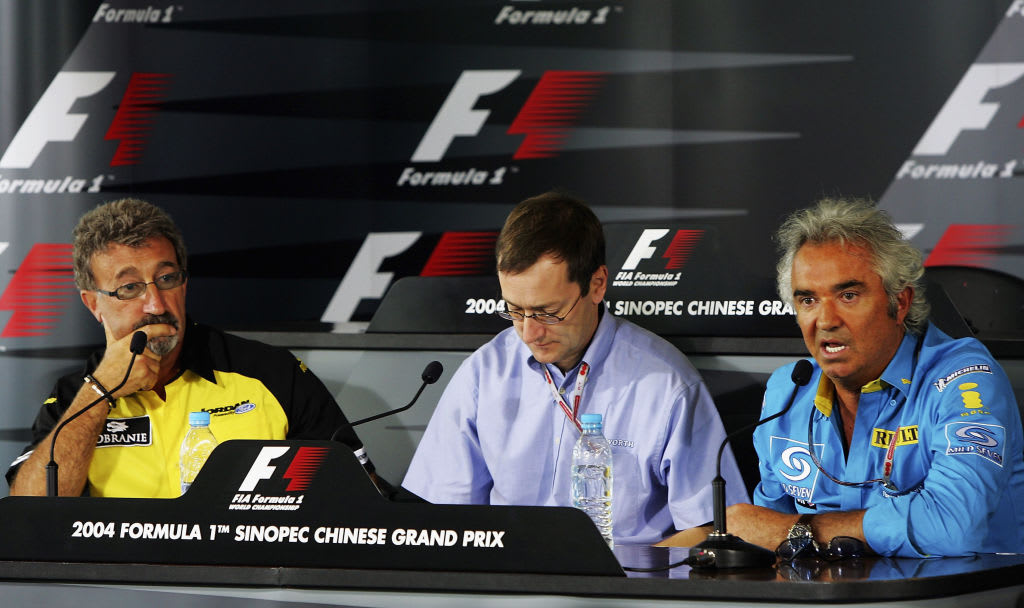
In the team principal press conference with Eddie Jordan and Tony Purnell (Jaguar), Flavio Briatore laid into the journalists asking the questions
“Really, I don’t like a press conference like this, talking about the problems for Formula 1. Everybody has problems, not only in these areas. We need to resolve our problems. If somebody makes $300m or $400m investment in Formula 1, I think this is very positive for Formula 1, but you guys only like to look at the bad things. There’s a lot of jealousy and you guys are part of that jealousy. I think this press conference is completely disgusting.”
PODCAST: Eddie Jordan on the life and times of his iconic F1 team
Jaguar were clearly in trouble, to the point where over the weekend managing director Dave Pitchforth described them as “One team for sale: used, abused but ready to go,” and Bernie Ecclestone (Flav’s big buddy) was himself quite candidly telling the BBC that he didn’t expect Minardi to survive.
It made you wonder just who might be left to embrace and enjoy that great future that Flav predicted. Ironically, however, he needn’t have worried: soon after the Chinese race the much-missed Dietrich Mateschitz stepped in to save both Jaguar and Minardi, rebranding them Red Bull and Toro Rosso…
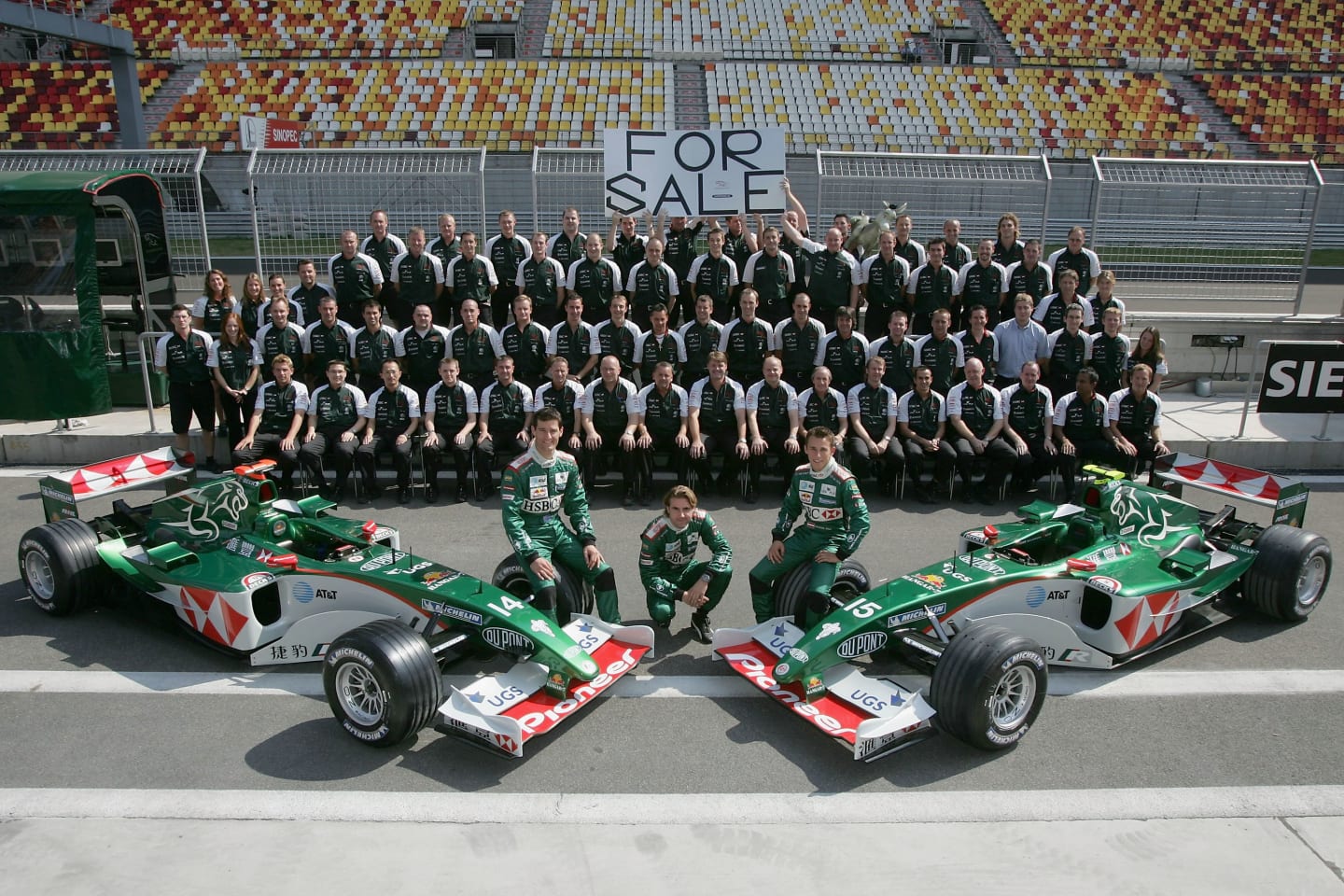
The Jaguar team pose for a photo at the Chinese Grand Prix, with a not-so-subtle message included at the back
Meanwhile, that first Chinese GP was a cracker, thanks to Ferrari’s Rubens Barrichello, BAR-Honda’s Jenson Button and McLaren Mercedes’ Kimi Raikkonen who kept the 150,000 spectators enthralled after racing head-to-head for all 56 laps. Amazingly, a mere 1.469s covered them after a shade under 190 miles.
“I was not sure I had command of the race until my final stop when Ross Brawn told me that I should be okay,” the victorious Rubens said, having also just beaten team mate Michael Schumacher at Monza, and taken pole in Shanghai.
“As I left the pits I still pushed flat out and then at Turn 3 I looked in my mirrors and saw no-one behind me, so I knew I was OK. The team told me to back off a bit, but then I had to step up the pace again when Jenson got closer.”
“We came here to keep Renault at bay for second in the championship,” Button said. “I didn’t get a good start and losing those two places was disastrous. But today proved again that our first win is getting closer. Our strategy was good but it was so hard to push against the three-stoppers, so in the end I had to concentrate on keeping Raikkonen behind me.”
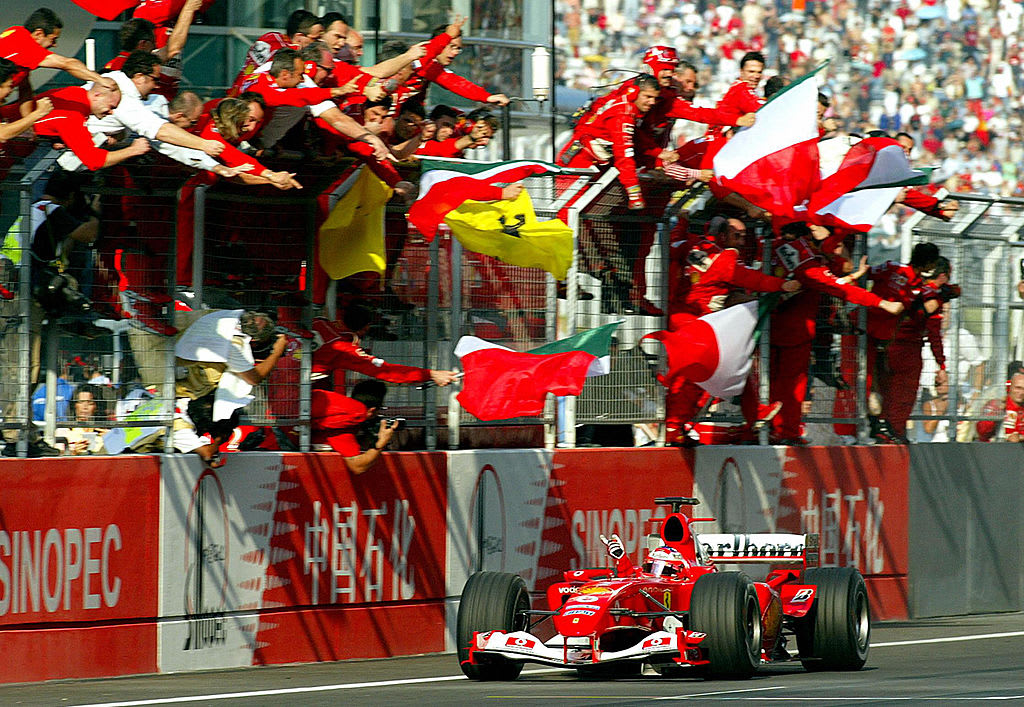
Rubens Barrichello takes victory for Ferrari in the very first Chinese Grand Prix
“The change in our strategy didn’t work and I lost second to Jenson,” Kimi said. “But from where I was sitting it was a close and exciting race.”
Fernando Alonso was a distant fourth ahead of Juan Pablo Montoya’s Williams BMW, Takuma Sato’s BAR Honda, and the Saubers of Giancarlo Fisichella and Felipe Massa.
LIGHTS TO FLAG: Takuma Sato on racing in F1 for Jordan and BAR – and his amazing Indy 500 success
And Schumacher himself? His first Chinese Grand Prix was a disaster. He started from the pit lane after spinning on his qualifying lap and then requiring a new engine for his Ferrari. He was never in contention, survived a crash with rookie Christian Klien on the 11th lap, and then spun on his own four laps later.
Twenty laps later still a rear tyre failed, and after another late pit stop for fuel the German finished a lapped 12th, his only consolation setting fastest lap on his fresh tyres on Lap 55. “This was a slightly more interesting race than I would have wanted!” he said ruefully.
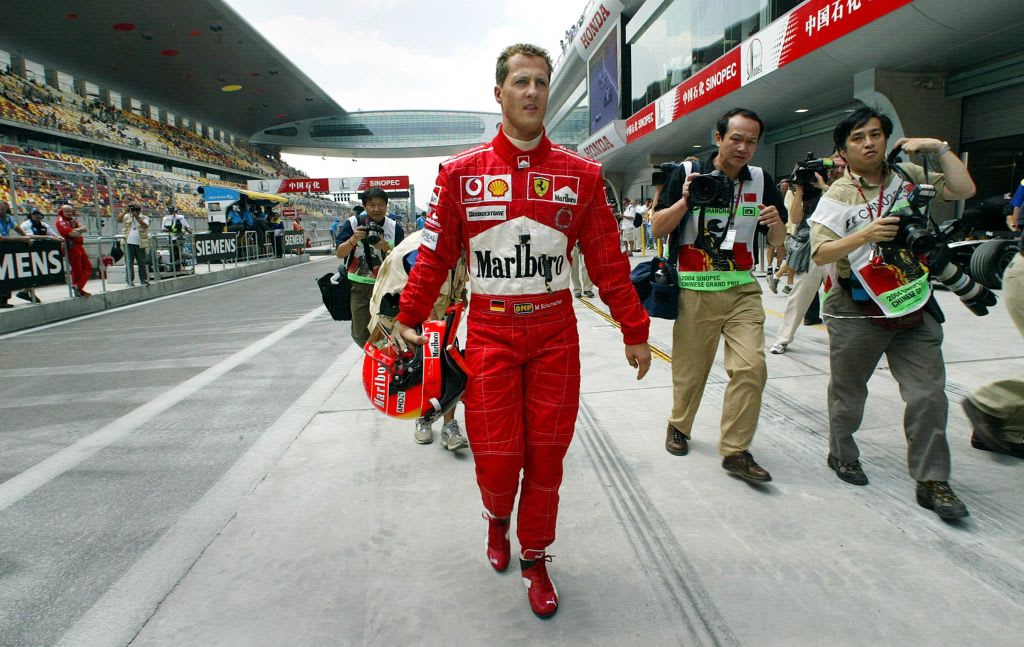
Michael Schumacher had a miserable first race in China
Besides Rubens, the happiest man was the one who brought China into the F1 fold. “It was a good race, wasn’t it?” Bernie Ecclestone said with a smirk. “Just shows what can happen without Michael…”
And on a pretty impressive new track.
YOU MIGHT ALSO LIKE
News Perez and Red Bull agree to part ways following conclusion of 2024 season
Feature END OF YEAR REPORT: McLaren – A first constructors' title in 26 years, but can a drivers’ championship follow next year?

Video SECRET SANTA: Watch to see what the F1 drivers gave each other for Christmas
Feature ANALYSIS: Why Red Bull chose Lawson instead of Tsunoda as Perez's replacement

